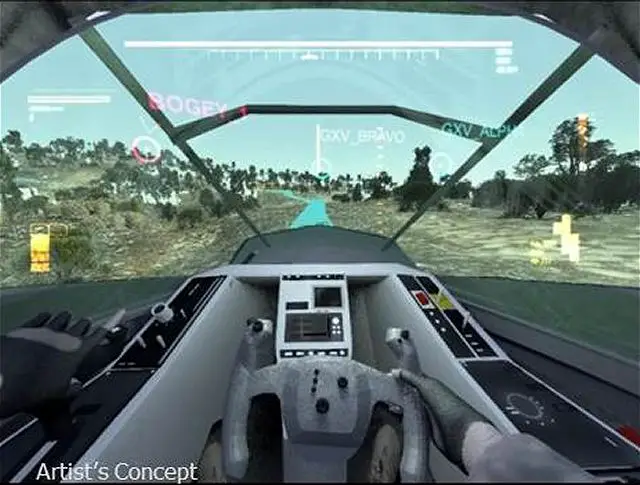DARPA has created GXV-T Ground X-Vehicle Technology to increase protection of modern fighters 190814
| a | |||
Ground X-Vehicle Technology (GXV-T) |
|||
| a |
|||
| Tuesday, August 19, 2014 08:13 AM | |||
| DARPA has created GXV-T Ground X-Vehicle Technology to increase protection of modern fighters. | |||
For
the past 100 years of mechanized warfare, protection for ground-based
armored fighting vehicles and their occupants has boiled down almost exclusively
to a simple equation: More armor equals more protection. Weapons’
ability to penetrate armor, however, has advanced faster than armor’s
ability to withstand penetration. As a result, achieving even incremental
improvements in crew survivability has required significant increases
in vehicle mass and cost. |
|||
 Artist's concept of Ground X-Vehicle Technology (GXV-T) |
|||
| DARPA has created the Ground X-Vehicle Technology (GXV-T) program to help overcome these challenges and disrupt the current trends in mechanized warfare. GXV-T seeks to investigate revolutionary ground-vehicle technologies that would simultaneously improve the mobility and survivability of vehicles through means other than adding more armor, including avoiding detection, engagement and hits by adversaries. This improved mobility and warfighting capability would enable future U.S. ground forces to more efficiently and cost-effectively tackle varied and unpredictable combat situations. “GXV-T’s goal is not just to improve or replace one particular vehicle—it’s about breaking the ‘more armor’ paradigm and revolutionizing protection for all armored fighting vehicles,” said Kevin Massey, DARPA program manager. “Inspired by how X-plane programs have improved aircraft capabilities over the past 60 years, we plan to pursue groundbreaking fundamental research and development to help make future armored fighting vehicles significantly more mobile, effective, safe and affordable.” To
familiarize potential participants with the technical objectives of GXV-T,
DARPA has scheduled a Proposers' Day on Friday, September 5, 2014, at
DARPA’s offices in Arlington, Va. Advance registration is required
through the registration website: http://www.sa-meetings.com/GXV-T. Space
is limited and registration closes Friday, August 22, 2014 at 5:00 PM
Eastern Time or when capacity is reached, whichever comes first. DARPA
reserves the right to limit the number of attendees from any individual
organization. |
|||
 |
|||
GXV-T’s
technical goals include the following improvements relative to today’s
armored fighting vehicles:
-
Reduce vehicle size and weight by 50 percent -
Radically Enhanced Mobility – Ability to traverse diverse off-road
terrain, including slopes and various elevations; advanced suspensions
and novel track/wheel configurations; extreme speed; rapid omnidirectional
movement changes in three dimensions DARPA aims to develop GXV-T technologies over 24 months after initial contract awards, which are currently planned on or before April 2015. The GXV-T program plans to pursue research, development, design and testing and evaluation of major subsystem capabilities in multiple technology areas with the goal of integrating these capabilities into future ground X-vehicle demonstrators. |
|||


























